Roseville, CA Pollen and Allergy Report for Summer 2023
Pollen Allergy Trends in Roseville, CA
When is pollen lowest in Roseville, CA?

February
Lowest month total PPM
Avg. PPM
When is pollen highest in Roseville, CA?

April
Highest month total PPM
Avg. PPM
How does pollen in Roseville, CA compare to California?
Roseville has a lower average PPM than the state of California.
Roseville yearly avg PPM:
California yearly avg PPM:
How does pollen in Roseville, CA compare to the USA?
Roseville has a lower average PPM than the USA.
Roseville yearly avg PPM:
USA yearly avg PPM:
Is pollen worse this year in Roseville, CA?
Spring 2023 was worse than spring 2022.
Spring 2023 PPM:
Spring 2022 PPM:
Average PPM in Roseville, CA


Roseville, CA Pollen and Allergy Breakdown by Month
Grass
When is grass pollen highest in Roseville, CA?
May has the highest grass pollen in Roseville, CA with an average PPM of
When is grass pollen lowest in Roseville, CA?
December has the lowest grass pollen in Roseville, CA with an average PPM of
Tree
When is tree pollen highest in Roseville, CA?
April has the highest tree pollen in Roseville, CA with an average PPM of
When is tree pollen lowest in Roseville, CA?
August has the lowest tree pollen in Roseville, CA with an average PPM of
Weed
When is weed pollen highest in Roseville, CA?
November has the highest weed pollen in Roseville, CA with an average PPM of
When is weed pollen lowest in Roseville, CA?
February has the lowest weed pollen in Roseville, CA with an average PPM of
Roseville, CA Pollen Monthly Breakdown by Pollen Type
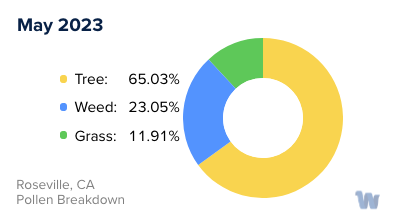
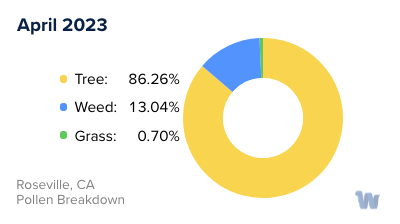


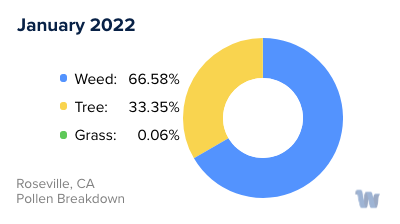
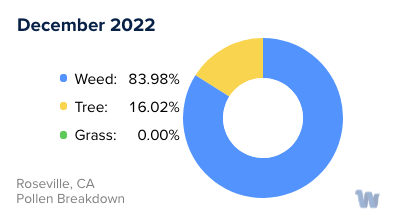
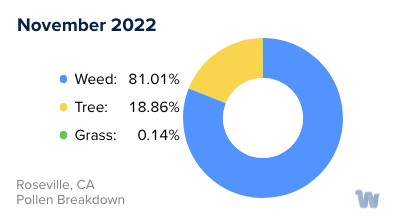
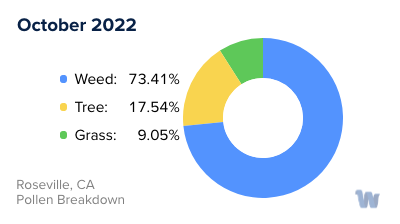
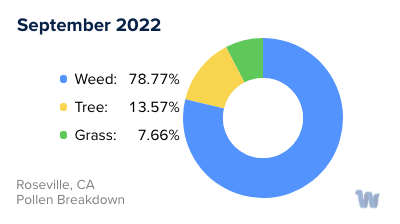
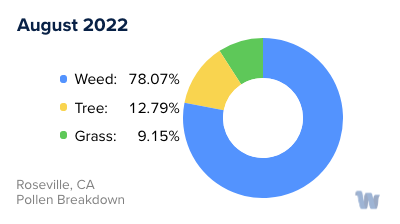
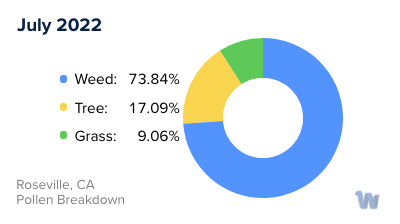
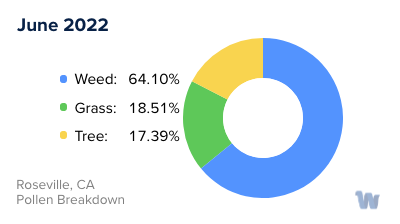
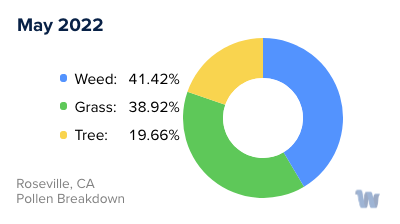
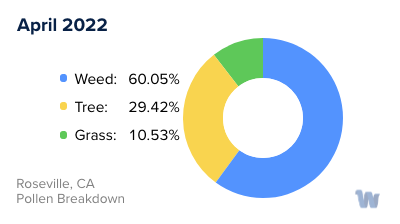
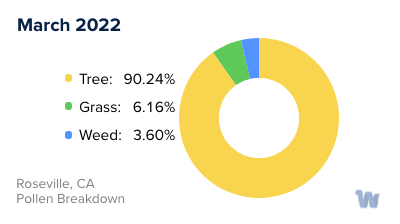
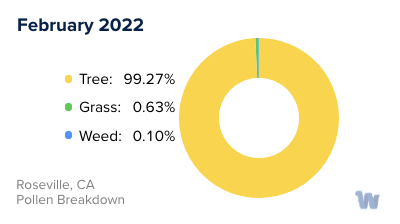
Pollen and Hay Fever in Roseville, CA
Roseville, nestled in the heart of California, experiences a unique dance of seasons, each bringing its own cocktail of pollen types that may trigger allergic reactions, often referred to as hay fever or pollen allergies. Understanding the ebb and flow of these pollen seasons can help individuals anticipate and navigate these seasonal challenges.
The primary offenders in Roseville's pollen scene are grasses, trees, and weeds, which release their pollen at specific times of the year. Some of the most common allergens include bluegrass, ryegrass, sagebrush, ragweed, Russian thistle, mulberry, oak, olive, ash, cedar, and eucalyptus.
Let's turn to the calendar and break down the usual pollen seasons in Roseville. Allergy season typically starts around late January and stretches until early October. This extended allergy season is a result of California's milder winter and its coastal climate, which lends itself to lower pollen counts than other states with similar weather conditions.
It's important to note, however, that the strength of the pollen tide varies throughout the year. Keep a close eye on pollen counts during the months of April, May, and September. These periods represent the peak of allergy season, when the air is especially thick with pollen. Reducing outdoor time during these peak periods and favoring evening outings, when pollen counts are typically lower, can help in managing exposure.
As the autumn leaves start to fall in October or November, so does the end of the allergy season. This period brings a much-needed respite from the seasonal allergies, giving the residents of Roseville a break from the outdoor allergens. But remember, even as the winter chill sets in and people spend more time indoors, indoor allergens can still pose a challenge.
In Roseville, the dance of the seasons brings not only changes in scenery but also changes in the air we breathe. By understanding the rhythm of Roseville's pollen seasons, we can better appreciate and navigate the city's unique seasonal landscape.

